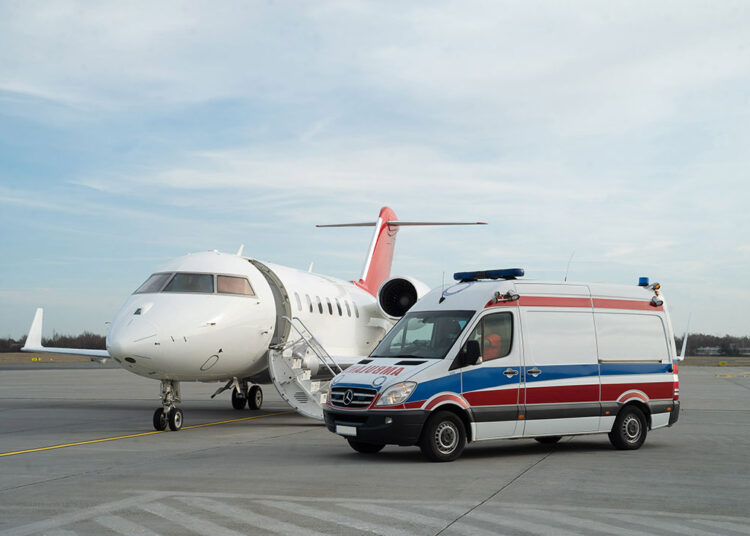image from: mti-247.com
Introduction
In medical emergencies, time is often the most critical factor. Air ambulance services provide rapid transportation for patients who need urgent medical care, often saving lives in situations where ground transportation would be too slow or impossible.
Whether it’s a critically ill patient in a remote area or an accident victim requiring specialized care in another city, air ambulances bridge the gap between urgent need and immediate treatment.
This guide explains what air ambulance services are, how they work, the associated costs, their benefits, and how to choose the best provider for your needs.
What Are Air Ambulance Services?
An air ambulance is a specially equipped aircraft—either a helicopter or fixed-wing airplane—designed to transport patients under medical supervision. These services are staffed by trained medical teams, such as paramedics, nurses, and sometimes physicians, ensuring that patients receive continuous care during transport.
Types of Air Ambulances:
-
Helicopter Air Ambulances – Best for short distances and accessing areas with no airport.
-
Fixed-Wing Air Ambulances – Ideal for long-distance or international patient transport.
When Are They Needed?
Air ambulance services are typically used in situations such as:
-
Transporting critical patients from accident scenes to trauma centers.
-
Moving patients from rural or remote areas to major hospitals.
-
Transferring patients between hospitals for specialized treatment.
-
Repatriating patients who fall ill or are injured while abroad.
How Much Do Air Ambulance Services Cost?
Costs vary depending on distance, location, type of aircraft, and required medical equipment.
Average Price Range:
-
Helicopter transport (domestic): $12,000 – $25,000
-
Fixed-wing transport (domestic): $15,000 – $35,000
-
International flights: $40,000 – $200,000+
Factors Affecting Cost:
-
Distance traveled.
-
Aircraft type and fuel costs.
-
Medical team composition.
-
Special equipment (ventilators, incubators, etc.).
-
Urgency of the request.
Tip: Some health insurance plans may partially cover air ambulance costs—always confirm coverage in advance.
Key Benefits of Air Ambulance Services
-
Speed – Rapid transportation can mean the difference between life and death.
-
Access to Remote Areas – Reach patients in mountainous, rural, or disaster-affected regions.
-
Specialized Medical Care – Onboard equipment and trained staff provide ICU-level care during transit.
-
International Repatriation – Safely transport patients back to their home country.
-
Patient Comfort – Faster travel minimizes physical stress and discomfort.
How to Choose the Best Air Ambulance Provider
When selecting an air ambulance service, consider the following:
-
Accreditation & Licensing
-
Look for providers accredited by organizations like CAMTS (Commission on Accreditation of Medical Transport Systems).
-
-
Medical Team Qualifications
-
Ensure staff have experience in critical care and emergency medicine.
-
-
Aircraft Type & Equipment
-
Confirm they have the right aircraft for your distance and medical needs.
-
-
Response Time
-
A good provider can mobilize within hours.
-
-
Insurance & Payment Options
-
Check whether they work with your insurer or offer flexible payment terms.
-
-
Reputation & Reviews
-
Read testimonials and check safety records.
-
Industry Trends in Air Ambulance Services
-
Telemedicine Integration – Remote doctors assisting inflight care.
-
Eco-Friendly Aircraft – More fuel-efficient and sustainable fleets.
-
International Partnerships – Providers collaborating to ensure global coverage.
Conclusion
Air ambulance services are a vital part of modern healthcare, offering speed, accessibility, and specialized care when minutes matter most. While the cost can be significant, the benefits often outweigh the expense in life-threatening situations.
By understanding the different types of air ambulances, knowing the cost factors, and choosing a reputable provider, you can ensure that you or your loved ones receive the fastest and safest possible transport in an emergency.











